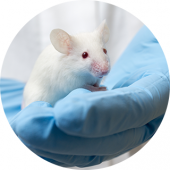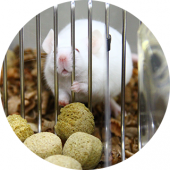Share
Two teams have been awarded £100k each to develop products that will improve the welfare of mice, as part of the 2020 Single Phase CRACK IT Challenges.
CRACK IT Challenges is the NC3Rs' open innovation funding competition, which brings together industry, academia and SMEs to deliver ready-to-use products and services that replace, reduce and refine animal use. Challenges are developed in collaboration with Sponsors who provide in-kind contributions or co-funding to support development of the Challenge product. Challenges may consist of one or two phases, with Single Phase Challenges typically focusing on technologies that are closer to market, require less research or have lower development costs than Two Phase Challenges.
Further information about the CRACK IT Challenges competition process can be found on the NC3Rs Innovation Platform.
Challenge 38: Mouse MApp
Assessing the welfare of mice used in research requires careful monitoring to ensure appropriate actions are taken to minimise pain or suffering, such as the implementation of humane endpoints. A number of welfare scoring systems have been developed, including the mouse grimace scale (MGS), a graded measure of changes in facial expression related to pain, and body condition scoring (BCS), which correlates a mouse's body condition to potential changes in its health. While these systems are non-invasive and reliable, they can be labour-intensive and require consistent training across facilities, so have not been widely adopted.
Sponsored by AstraZeneca, GSK, CRUK Manchester Institute, The Sainsbury Wellcome Centre and Agenda Vets, the aim of the Mouse MApp Challenge is to develop an app that uses artificial intelligence and machine learning to automatically detect changes in facial expression or body condition and monitor the welfare of mice. If successful, the app could improve and harmonise decisions regarding animal welfare and humane endpoints, reducing individual suffering in large numbers of mice used in scientific procedures.
Funding has been awarded to a team led by Dr Matthew Leach (Newcastle University), who will develop an app using the MGS and BCS to assess photographs or short video clips of mice.
Learn more about the Mouse MApp Challenge.
Challenge 39: Tat-Fit
Tamoxifen is widely used to temporally and spatially express or delete genes in mice using the CRE recombinase system. Rodent chow containing tamoxifen is commercially available, but mice do not readily consume it because of its bitter taste, so may ingest varying amounts and could lose weight. As a result, tamoxifen is typically administered using invasive methods such as oral gavage, which can be stressful for the animal and time-consuming for staff.
Sponsored by the Mary Lyon Centre (MRC Harwell), the Tat-Fit Challenge aims to develop a method that allows tamoxifen to be added to rodent chow without changing its palatability or levels of consumption by the animals. Delivering a palatable form of tamoxifen could reduce potential welfare concerns associated with its bitter taste and lead to a reduction in the overall number of mice used through more consistent dosing.
Funding has been awarded to a team led by Dr Fang Liu (Fluid Pharma Ltd) to develop taste-masking coated tamoxifen particles, applying the proprietary MicroCoatTM technology.
Learn more about the Tat-Fit Challenge.

